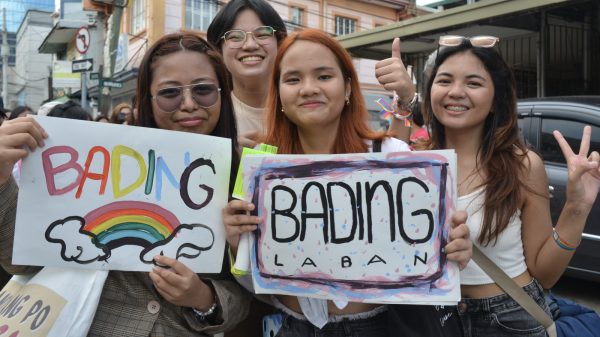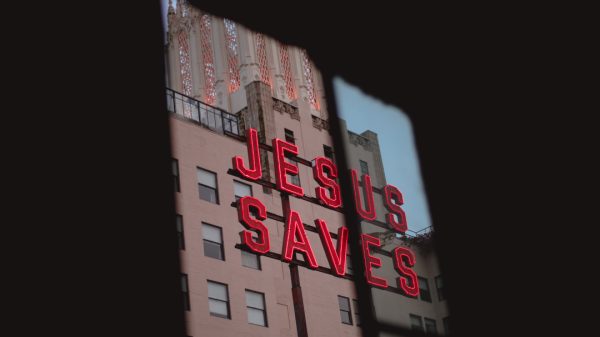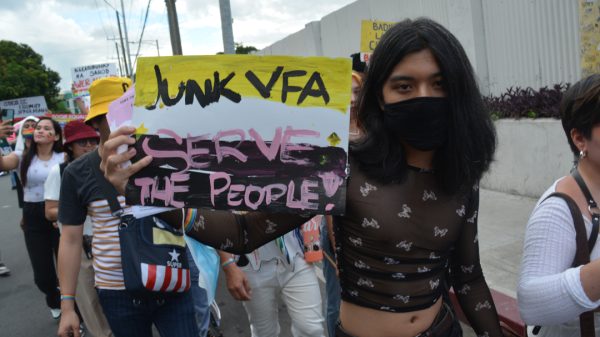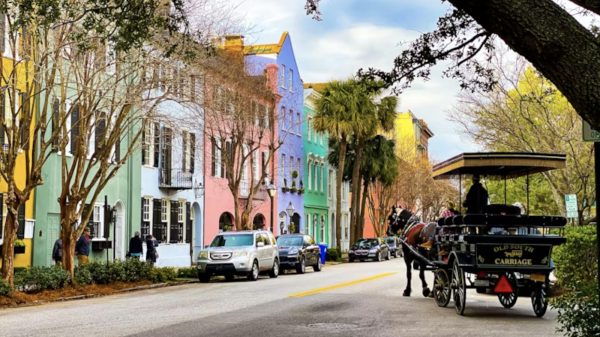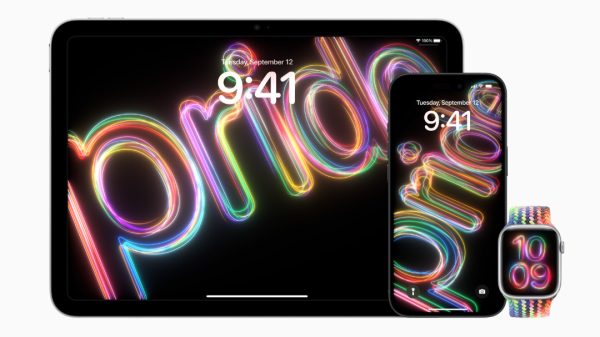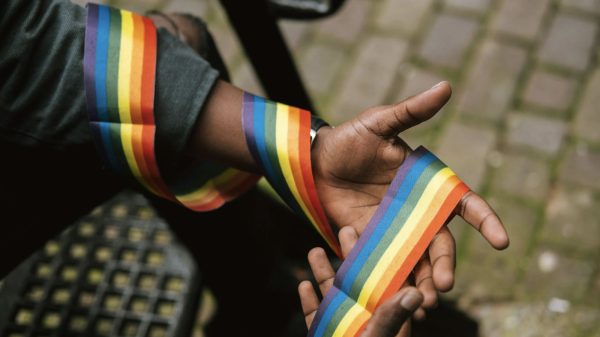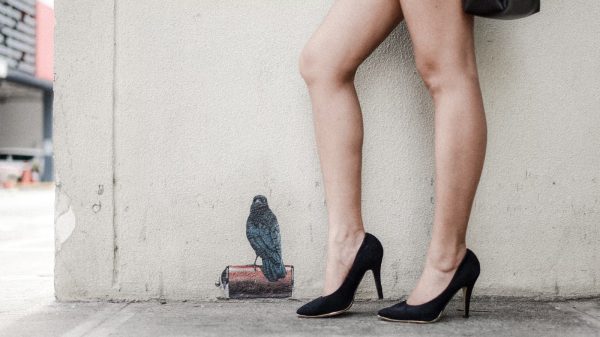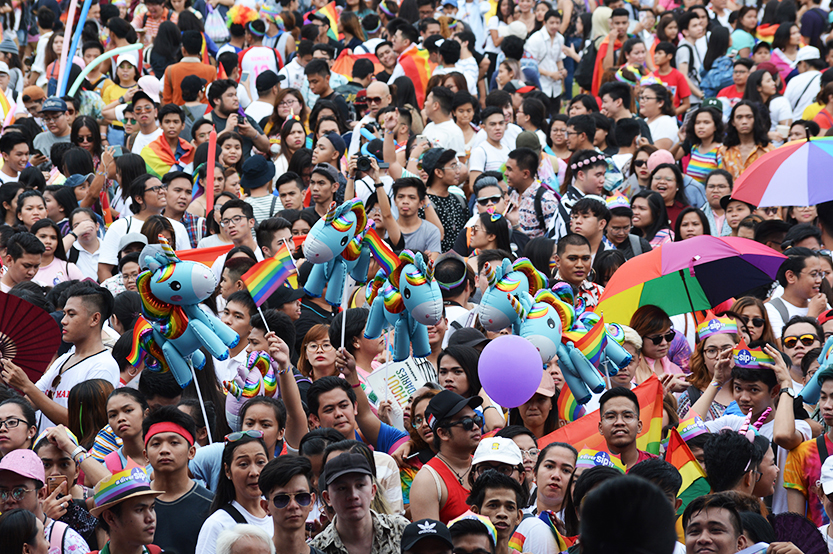Western-dictated LGBTQIA “Pride” is about to happen anytime now, with June fast approaching. This is supposed to be the one month in a year when everything LGBTQIA is to be “celebrated”, to be “showcased”. Why? Because – historically – it’s the same month when the Stonewall Inn riots happened in New York in the US, when members of the LGBTQIA community raged against the police because of abuses committed against them.
And so, not surprisingly, already, numerous companies have been releasing Pride-related merchandise, out to get the pink currency by blinding members of the LGBTQIA community with glitters. If you can afford to, head to the US in June, and walk in any – as in ANY – shopping area to understand this point. From Converse to Dr. Martens to Adidas to Starbucks to phone carriers to… just about everything, there’s something rainbow-colored being sold, supposedly in support of Pride.
Now, now, don’t get me wrong: The “presence” is noteworthy because everything LGBTQIA is (finally) going mainstream. I’m all for that.
But this mainstreaming is also problematic because it actually highlights so many of what’s wrong in society as a whole, and the LGBTQIA community in particular – e.g. how businesses are profiting from the LGBTQIA community without helping its members; and how many LGBTQIA people choose to look the other way just to… get their hands on those new pair of shoes with rainbow stripes, or those shirts with rainbow printing, or that P200 cup coffee in a plastic cup with rainbow design…
The “selling” of LGBTQIA “Pride” has been noted before, and the trend continues even now – e.g. Converse, which has “rainbow sneakers”, won’t even donate any proceeds to actual LGBTQIA causes; and locally, Bench has joined the bandwagon even if (back when the rainbow wasn’t so hip) it did not even support Ang Ladlad, and it can even be argued that it even created a fake “controversy” by using the LGBTQIA community to get media mileage.
In a gist: Many brand’s supposedly pro-LGBTQIA move is performative in the name of making a profit.
Talking to those under the rainbow (for instance, Pride organizers that spend half a million pesos for a half-day parade; but won’t even give a few hundred or thousand pesos to help feed LGBTQIA workers who are holding rallies after they were removed from work by multinational companies) is for another day; though for now, here are five things that businesses can do to (truly) impact the LGBTQIA community…

1. DONATE.
Put your wallet where your mouth is.
You say you support the rights of LGBTQIA workers who were kicked out of their jobs because of who they are? Then help fund them when they hold rallies against those who fired them.
You say you’re an HIV “advocate”? Sponsor one or two or three persons living with HIV by paying their PhilHealth (amounting to P2,400 per person per year).
You say you’re concerned about your LGBTQIA workers? Give them the same benefits being given to heterosexual people (e.g. those who can legally marry).
You say you’re concerned about senior LGBTQIA people? Help fund the establishment of an actual – physical – home for them.
You say you worry about the mental health of LGBTQIA people (including those working for you) because they continue to experience discrimination? Spend on mental health care.
You say you worry about LGBTQIA youth not being able to access education because of who they are/who they love? Offer a scholarship program to them.
And if you have supposedly LGBTQIA-related for-profit event, DONATE even a portion of your profit to LGBTQIA-related causes.
The harsh truth is: Talk is cheap; but your donation can save lives.
2. Choose where your money goes.
Related to #1, CHOOSE WELL.
There are too many “glittery” LGBTQIA or related organizations; but peel that glitter away, they’re nothing there but empty shells. There are way too many LGBTQIA or related organizations that we often hear of/about, but are actually infamous (in the LGBTQIA community itself) because they’re in the “advocacy” just to profit from it.
Know the opportunists.
Now, how to do this?
They disappear after Pride. LGBTQIA organizations that surface ONLY once a year are just as bad as the private companies that only surface at the same time; they’re really just there to make money.
They’re almost always JUST online or in mainstream media, boasting about this or that, all talk but you never see them do actual LGBTQIA-related work. They co-opt other people’s struggles (e.g. they’d say they represent minorities in the LGBTQIA community), and then they won’t let members of these minority sectors speak for themselves (for instance, LGBTQIA people who are also persons with disability/PWD, seniors, members of the Lumad communities, Muslims, informal working sector, informal settlers and those living with HIV). These people will claim to represent all, so “give us money”, but they do not know shit about these people they claim to represent. So please, STOP funding these people.
You only see them in parties/social gatherings; never where the action happens (e.g. picket lines of workers, including members of the LGBTQIA community, removed by multinational corporations; rallies for the anti-discrimination bill; visits in HIV treatment hubs; et cetera).
Their bosses “beg” you to “sponsor” their international trips. By itself this is “common practice” by NGOs and CBOs with non-existent funds; but when this is all they do, then you need to reconsider the support given to them.
Do your research. Not everyone “popular”, even members of the LGBTQIA community, have the community’s concern in their minds. Stop yourself from getting used and abused to profit off the misery of others.

3. We understand profit; but don’t stop there. Develop pro-LGBTQIA policies.
According to Stonewall in the UK, 19% of LGBT workers experienced verbal bullying from their colleagues, customers or service users because of their sexual orientation. Unfortunately, 13% say that they would not feel confident in reporting homophobic bullying in their workplace.
This no-so-welcoming environment is not good for LGBTQIA employees; and – to over-simplify – if your employees aren’t happy while working for you, their performance is bound to suffer, and this means a loss for your company.
So start creating those LGBTQIA-affirming policies.
Give diversity and inclusion trainings to all your employees (including those holding high positions) for them to understand sexual orientation, gender identity and expression (SOGIE).
Include people’s SOGIEs in the existing employee’s manual/handbook – e.g. allow trans women to use women’s CR/loo/toilet; punish those who discriminate; et cetera.
Offer the same benefits to the partners of LGBTQIA people (even if they are not legally married because the country still does not allow this).
Allow LGBTQIA employees to organize.
By making pro-LGBTQIA part of running your business, your impact will be there longer.
4. Hire LGBTQIA people, including in leadership positions.
In 2017, fastfood giant Jollibee Foods Corporation (JFC) apologized to genderqueer Bunny Cadag who alleged experiencing discrimination, following the PR tempest their story made since it was first shared online.
Cadag was interviewed for a job as a transcriber by people from the Human Capitol Development (HCD) at JFC’s main office in Ortigas. That first day of evaluation passed without incident. However, when Cadag returned another day to continue the training session, a certain Louie Angsico, said to be one of the contact persons of HCD, spoke with Cadag over the phone to tell them that JFC is not yet “welcoming to the idea” of having a transgender person working for the company. Angsioco allegedly added that JFC is a Roman Catholic company.
While JFC eventually apologized, the perception (particularly for members of the LGBTQIA community) continues to exist that Jollibee… discriminates.
Beyond the “image” angle, though, get this: Research from UCLA found that nearly all (92%) of companies with anti-discrimination policies credit the policies with having a positive impact on annual sales. Executives also said that these policies lead to better recruitment and retention of top talent.
The Center for Talent Innovation’s report, “Out in the World: Securing LGBT Rights in the Global Marketplace”, also found that 71% of LGBTQIA respondents and 82% of allies are more likely to purchase from a company that supports LGBTQIA equality.
So yes, having more LGBTQIA employees can positively impact the bottom line.

5. Don’t just show up once a year.
Companies that are ONLY seen once a year, attending corporate Pride parade, are actually seen as opportunists, using the LGBTQIA community only to get media mileage. And when NOT backed by the aforementioned points (e.g. creating LGBTQIA welcoming workplaces), this is actually what it really is.
So while joining the party is fun (and let me say this, those who can should do this), LGBTQIA-related efforts should NOT stop there.
In the end, profiting from members of the LGBTQIA community may earn you some cash in the short term; but pinkwashing isn’t gonna help you in the long run. Look at how Israel’s pro-LGBTQIA efforts are now seen as nothing but part of a “nation-branding program” to use the LGBTQIA community as cover for its abuses against Palestine. Or how Mar Roxas will always be marked by his flip-flopping on LGBTQIA issues. Or how there will now always be people who will see Bench as an opportunist by “selling” the rainbow, when it failed to support the LGBTQIA community when it mattered (i.e. while an LGBTQIA political party eyed a seat in Congress).
So do something good. Expect a return if you must; but ACTUALLY do something. It’s actually easy, and the benefits for any brand longer-lasting…
The founder of Outrage Magazine, Michael David dela Cruz Tan completed BA Communication Studies from University of Newcastle in NSW, Australia; and Master of Development Communication from the University of the Philippines-Open University. He grew up in Mindanao (particularly Kidapawan and Cotabato City), but he "really came out in Sydney" so that "I sort of know what it's like to be gay in a developing, and a developed world". Conversant in Filipino Sign Language, Mick can: photograph, do artworks with mixed media, write (DUH!), shoot flicks, community organize, facilitate, lecture, and research (with pioneering studies under his belt). He authored "Being LGBT in Asia: Philippines Country Report", and "Red Lives" that creatively retells stories from the local HIV community. Among others, Mick received the Catholic Mass Media Awards in 2006 for Best Investigative Journalism, and Art that Matters - Literature from Amnesty Int'l Philippines in 2020. Cross his path is the dare (guarantee: It won't be boring).

